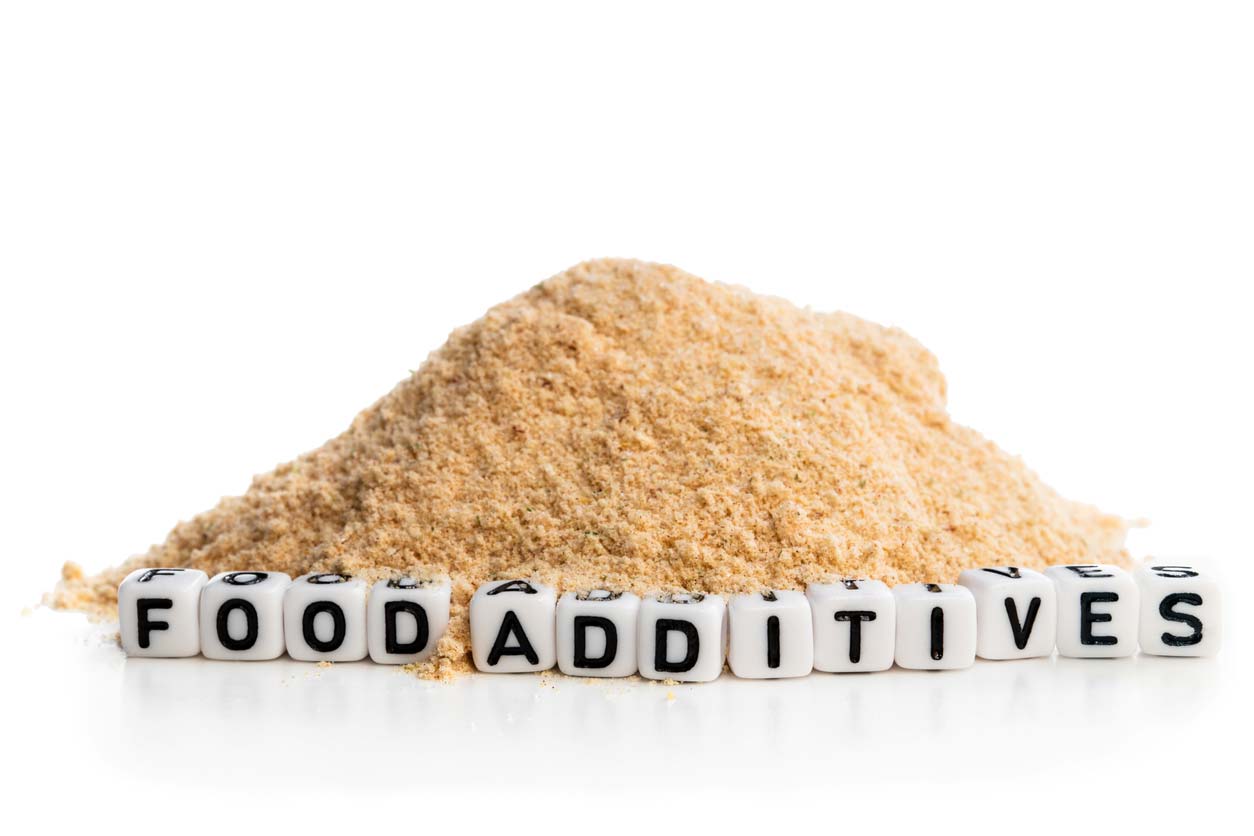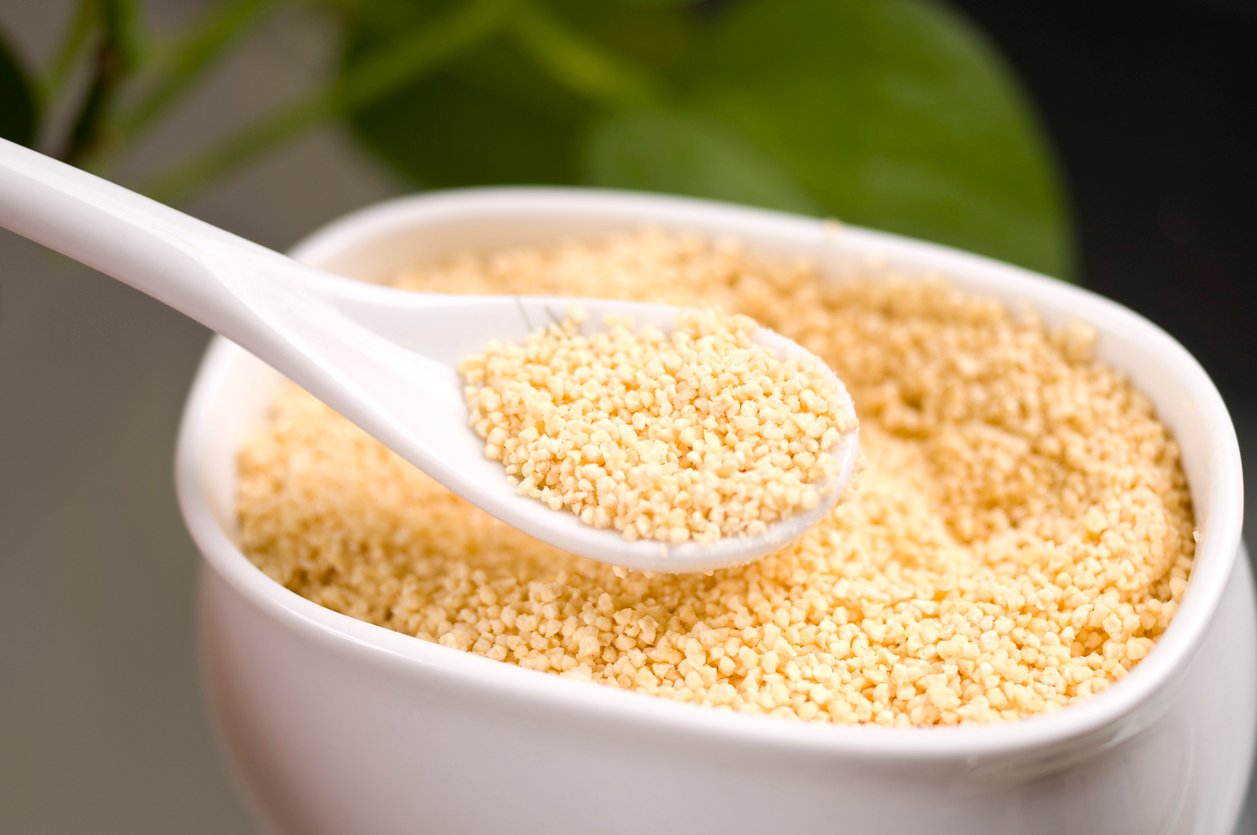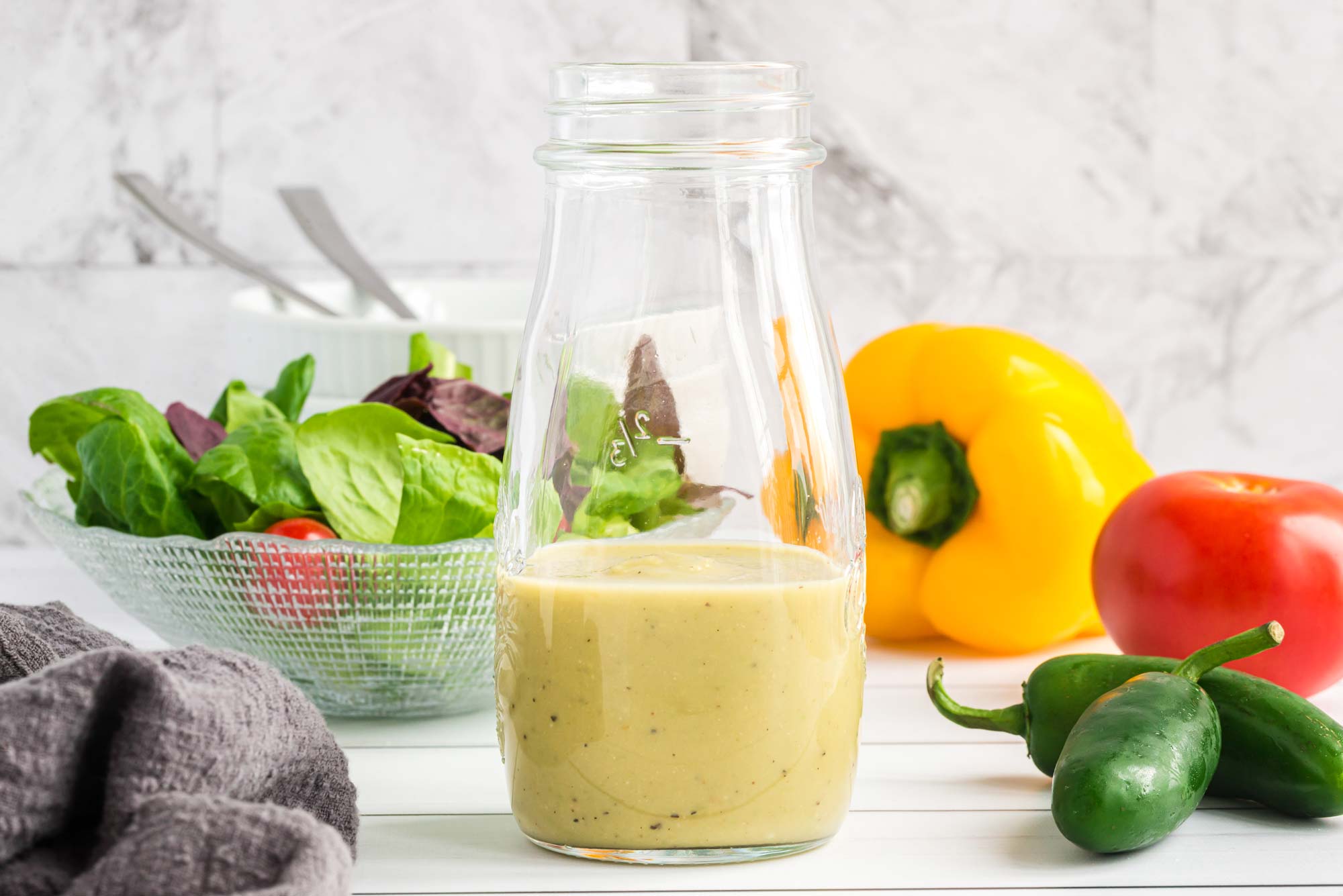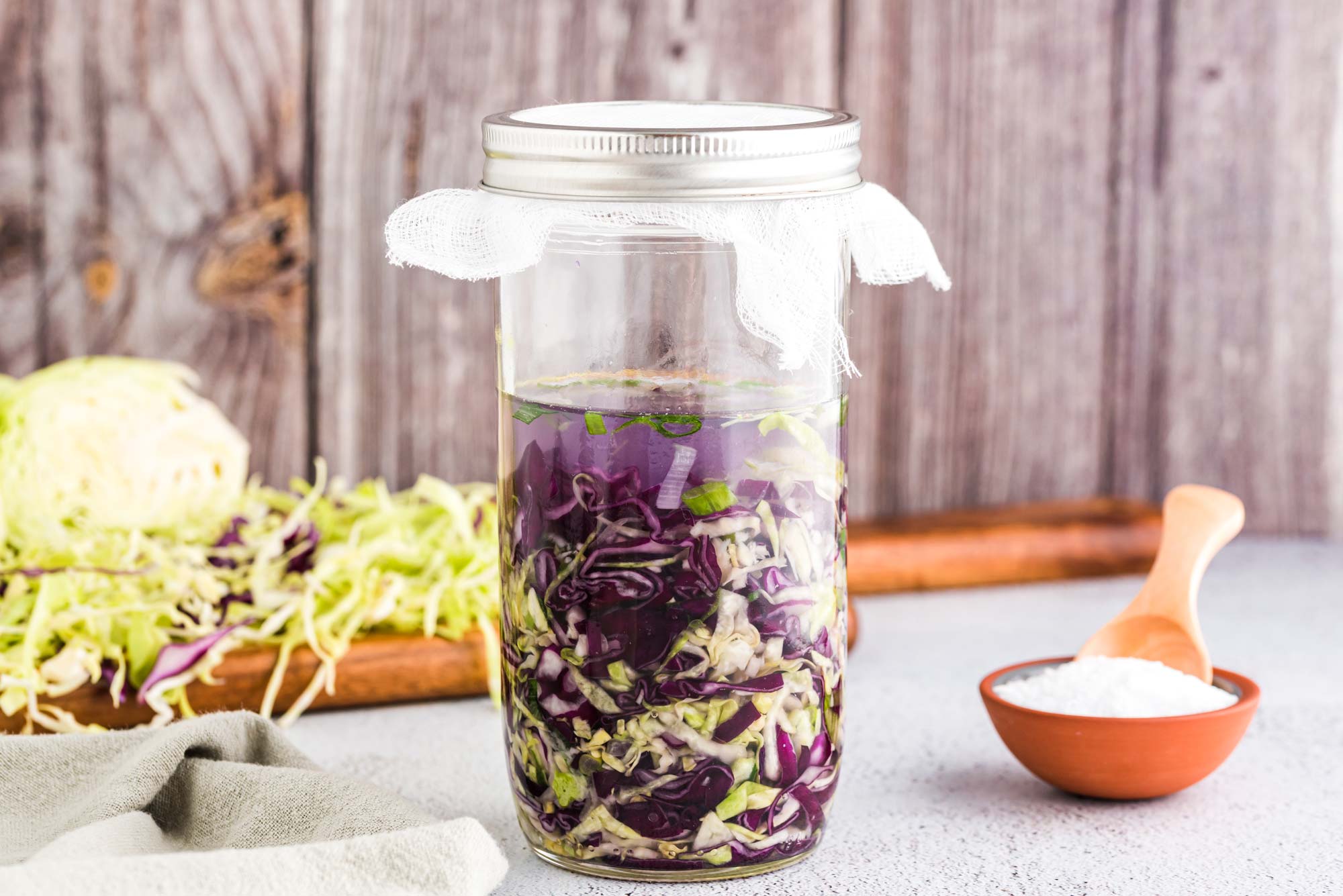The US Food and Drug Administration (FDA) cheerfully tells us that we shouldn’t worry about all the common food additives and ingredients that can legally get added to our food. After all (and I’m quoting directly here), “Our ancestors used salt to preserve meats and fish, added herbs and spices to improve the flavor of foods, preserved fruit with sugar, and pickled cucumbers in a vinegar solution. Today, consumers demand and enjoy a food supply that is flavorful, nutritious, safe, convenient, colorful, and affordable. Food additives and advances in technology help make that possible.”
To ensure consumer confidence in these food additives, the FDA has compiled the GRAS list. GRAS stands for “Generally Recognized as Safe,” and if the low bar and vagueness of that phrase doesn’t trouble you, the following facts might.
The Trouble with GRAS
The FDA’s GRAS database contains over 3,000 food additives and coloring agents, way more than the few hundred deemed safe by the database maintained by the European Union. How did the FDA come up with that list? Not by rigorous, unbiased testing, that’s for sure. The data FDA regulators use to determine an ingredient’s GRAS status typically comes from the manufacturer of that ingredient. But in the majority of cases, the FDA doesn’t even weigh in at all. In fact, the FDA ruled on only around 40% of the 6,000 safety-related decisions on ingredients submitted between 1990 and 2010. The rest were left up to manufacturers and trade associations to decide upon — without FDA review.
So it’s no wonder that US consumers are confused about whether food additives are actually safe. According to a survey conducted by the Pew Research Center, nearly two-thirds of Americans agree that food treated with artificial preservatives, colorings, and other additives comes with some risk. There’s a general preference toward “natural” foods in America, but natural doesn’t always mean what the consumer thinks it does.
This article explains why food additives are used, and takes a closer look at the most commonly used additives in natural and organic foods. What exactly are these additives? And what do we know about their safety?
Why Are Food Additives Used?
According to the FDA, food additives may be used for one of three main reasons. First, to maintain or improve safety and freshness; second, to improve or maintain nutritional value; and third, to improve taste, texture, and appearance.
Think about some of your favorite packaged foods and beverages. Have you ever been surprised by how long they stay fresh and maintain their texture, flavor, and coloring? I’ll bet there are junior high school basements still full of Twinkies and Saltines that were bought during the Eisenhower administration. You can thank food additives for that. Because of the ready-to-eat and convenience-focused nature of most foods today, food additives are used widely.
Some of the most common types of food additives include compounds used for specific purposes like:
- Anticaking – prevents lumps in powders like flour and crystalline substances like salt
- Bleaching – lightens or enhances the color of a food or allows them to brown when cooked
- Chelating – binds to minerals in foods to prevent deterioration
- Clarifying – keeps liquids clear from sediment
- Conditioning – improves the baking quality of flour
- Emulsifying – keeps water- and fat-soluble ingredients from separating
- Leavening – promotes rising in baked goods
- Moisture control (called humectants) – keeps packaged foods moist
- pH control – controls acidity and alkalinity in food to prevent spoilage
- Stabilizing and thickening – provides structure and “fatty” mouthfeel to low-fat foods
- Food preservatives, including antioxidants and antimicrobial agents – keeps food from spoiling
- Colorings, which may be natural or synthetic – improves the appearance of food
- Flavorings – adds flavor
- Sweeteners – adds sweetness
The end goal of each of these types of additives is to make food more profitable to merchants through decreased spoilage, and more attractive to consumers, whether through improved taste, nutrition, appearance, convenience, or a lower price.
However, the need for food additives would decrease if we relied more on fresh foods in our diets. In general, the faster the food spoils, the better it probably is for you.
Food Additives in Natural Foods
Before we go on, take a moment and ask yourself what “natural” means. It’s a nice, comforting word, conjuring up images of flowers, rivers, and placid cows grazing in verdant fields. Who wouldn’t want their food to be “natural” — the way nature intended?
However, the food industry knows that this word creates a halo effect, and so throws it around liberally on food packaging. The problem with the term “natural” is that consumers automatically associate it with 100% natural ingredients and confuse this claim with organic. Unfortunately, natural and organic are not the same thing.
“Natural” is a marketing term that’s not regulated in the US. However, it is regulated in some other countries. In the US, the FDA is dragging its feet on regulating this term. They did ask for public comments on whether “natural” deserves a regulated definition and how its use in food should be allowed back in 2016, but it doesn’t appear that this has gone anywhere since.
So currently, “natural” is very loosely defined to mean “nothing artificial or synthetic (including all color additives regardless of source) has been included in, or has been added to, a food that would not normally be expected to be in that food.” Since this definition is so vague, and so rarely enforced anyway, it has become, functionally, a misleading term that has little to no substance.
So what’s the takeaway here? The word natural doesn’t equal safe or healthy. It also doesn’t mean organic or non-GMO.
Here’s a funny and illuminating video that explains what “natural” really means (and doesn’t mean!).
https://www.youtube.com/watch?v=AftZshnP8fs
Organic Food Additives
Organically grown foods don’t include GMOs, and are also free from most pesticide treatments, including glyphosate. Any multi-ingredient or processed product has to contain at least 95% organic ingredients to bear the official organic label. That means there may still be room left for up to 5% non-organic ingredients. But these must be approved for use in the USDA National List of Allowed and Prohibited Substances.
While thousands of additives can be added to conventional foods, only around 40 agriculturally produced additives, and 65 non-agriculturally produced synthetics and non-synthetics, are allowed in organic food — and only after they’ve received a proper review from experts. These ingredients are permitted for use in organic packaged food only if there is no natural or organic alternative. Overall, organic food additives are considered safer than regular additives, and there are a lot fewer of them. But as you’ll see below, they’re not without their own issues.
10 Common Food Additives Found in Natural or Organic Foods
Below are some of the most common food additives in many natural and organic foods. Keep in mind that because there are so many additives, and the amount fluctuates over time, this is not nearly a comprehensive list.
1. Carrageenan
Carrageenan is a common food additive that’s made from seaweed. It’s a stabilizing and gelling agent that’s often used as a vegan alternative to animal-derived gelatin and turns up in many plant-based dairy alternatives.
The intake of carrageenan, for the average American, has increased significantly since the 1970s, from 45 mg to 7.7 g per day. (In other words, American’s are consuming 171 times as much carrageenan today as people did when they sat down to watch All in the Family together.) But there’s currently no specified acceptable daily maximum to consume.
While a few studies have seemingly established the safety of carrageenan and support its usage as a food additive, there is also a growing body of evidence that shows carrageenan may have more concerning outcomes than previously determined.
Although carrageenan is allowed and consumed in many natural foods, there are real concerns about its safety. Reported side effects of ingesting carrageenan include digestive issues, and there is some concern around its potential impact on gut health, inflammation, and glucose intolerance.
Interestingly, I’ve noticed that some plant-based brands have been phasing out their use of carrageenan, largely due to consumer demand to do so. More and more products now state that they don’t contain carrageenan, which is encouraging.
2. Xanthan gum
Xanthan gum is a thickening agent derived from sugar fermented with a bacteria called Xanthomonas campestris. Xanthan gum is a common food additive used in foods like packaged baked goods, ice cream, soup, sauces, salad dressings, gluten-free foods, and low-fat items.
Even though xanthan gum is derived from fermentation, it’s still considered a synthetic substance because it was created in a lab and doesn’t occur naturally. Because of its synthetic nature, some consumers allege it doesn’t belong in foods perceived as “natural.” But its usage may not be all bad. In fact, it appears to offer some potential health benefits. For instance, some human and animal studies indicate that xanthan gum may help lower high blood sugar, improve bowel regularity, help people with dry mouth, and may have anti-tumor properties.
On the other hand, some evidence suggests xanthan gum may lower blood sugar too much, cause allergic reactions in some people, and cause unwanted digestive symptoms, particularly when consumed in large doses.
An additional consideration is the sugar source used in the fermentation process. The sugar used for xanthan gum production may come from wheat, corn, soy, or dairy, which do not need to be organic and therefore may be genetically modified. Unfortunately, no certified organic xanthan gum variations exist currently, but some brands may be Non-GMO Project verified.
3. Guar gum
Guar gum is another gel-like thickening agent, and comes from guar beans. As a food additive, it’s often found in pudding, yogurt, sauces and gravies, soups, breakfast cereals, and ice cream.
Some studies show that small amounts of guar gum may offer a few health benefits — acting as a prebiotic, improving blood sugar among people with diabetes, reducing total and LDL “bad” cholesterol, and supporting weight loss. However, there are also some concerning health and environmental aspects of guar gum.
In the 1990s, a weight loss product called Cal-Ban 3,000 caused a stir when serious side effects were reported. In an effort to improve satiation, large amounts of guar gum were used in the product, which swelled to 10-20 times their size. Many people reported esophageal and bowel obstructions — and it even caused a few deaths. Although the amount of guar gum used in this weight loss product was vastly higher than the amounts used in food, some side effects are still being reported from consumption of guar gum, including gas, diarrhea, and bloating. As a result, guar gum is more tightly regulated now, with allowable amounts ranging from .35% in baked goods to 2% in vegetable juices.
Guar beans also have an association with hydrofracking — a very environmentally unfriendly fossil fuel sourcing process. Guar gum’s gel-like consistency has been used to make this process more efficient, which makes some of the other thickeners on this list seem slightly more appealing (but still not ideal ingredients).
4. Ascorbic acid
Ascorbic acid is a common food additive that’s the synthetic form of vitamin C. Used as an acidity regulator and antioxidant in packaged foods, ascorbic acid helps prevent bacterial growth and improve shelf life. It may also be added for nutritional purposes, or used in small amounts to prevent discoloration.
Ascorbic acid is largely considered nontoxic, and is water-soluble, meaning it’s not stored in the body. While excessive exposure may lead to erosion of tooth enamel, produce diarrhea, and promote kidney stones, the levels needed to achieve these side effects are far beyond what is typically used for food additive purposes. Overall, vitamin C, whether synthetically added as ascorbic acid, or obtained naturally from food, can act as an antioxidant in the body, support immunity, help boost iron absorption, and may even improve your skin health.
5. Agar
Agar (or agar agar) is a gel-like texturizer derived from algae with similar properties and usages to carrageenan. Commonly found in Asian foods, agar is another plant-based alternative to gelatin.
Agar is generally nontoxic with no established upper daily intake amount. But it does have maximum amounts set by the FDA for its use in different types of food, which is reassuring at least.
Some animal studies observed that very high intakes of agar could cause nutritional imbalances, diarrhea, and potential damage or blockages in the GI tract (but again, these amounts were well above the maximum amounts allowed in food). While others have shown beneficial effects of agar, including protecting against non-alcoholic fatty liver disease. Currently, agar is approved and recognized as safe for human consumption in the US, EU, UK, Australia and New Zealand, and by the Joint FAO/WHO Expert Committee on Food Additives.
6. Gelatin
A couple of the additives above were mentioned as substitutes for gelatin, so what exactly is gelatin? This is a highly purified animal protein derived from the collagen of pigs, fish, and cows. In other words, it’s a mixture of proteins and peptides found in animal connective tissues, and is not vegan (as you might have guessed).
Gelatin is used as a thickener and stabilizing agent in foods like pudding, sauces, broths, soups, and candy. It’s incredibly cheap to make because it’s a byproduct of the meat industry and almost always comes from factory-farmed animals. There are grass-fed and fish-derived versions as well, but they are not widely used.
Because gelatin is made almost entirely of amino acids and protein, it appears to be low-risk for side effects. And it even comes with some alleged health benefits, such as improving bone and joint health, hair thickness, and skin conditions. However, there are cleaner, plant-based ways to derive these benefits. And there are plenty of other options for thickening and stabilizing foods that don’t add to the ethical and environmental disaster that is factory farms.
7. Natural Flavors
Natural flavors are made in a lab setting and are used in countless packaged foods. Like artificial flavors, they are used to trick your tastebuds into thinking a food has a certain natural characteristic or flavor. The difference is that while artificial flavors are derived from inedible substances (like petroleum!), natural flavors are generally derived (originally) from edible sources of some kind. The definition from the FDA is a mouthful of words, which basically comes down to the fact that “natural flavors” can mean almost anything, and therefore may come with risks of allergens and unwanted side effects.
Over 2,500 chemically-derived flavor substances are used in the US and Europe, with some of the common ones being diacetyl, MSG, and castoreum. Overall, natural flavors are a cheap way to make food taste better and keep you coming back for more. They have no nutritional value, and I’m sorry to say that they may or may not be harmful since there isn’t always a lot of transparency on what they’re derived from.
8. Lecithin
Lecithin belongs to a larger group of compounds called phospholipids, which are fats that are a precursor for choline — a compound necessary for the neurotransmitter acetylcholine. In its natural state, lecithin has been studied for its cholesterol-lowering effects and potential usage in treating ulcerative colitis.
Lecithin is used as an emulsifying agent in foods like ice cream, peanut butter, and baby formula. While it occurs naturally in egg yolks, whole grains, soy, and Brussels sprouts, the food additive version of lecithin comes from either soy, eggs, wheat, safflower, or corn. You’ll often see soy lecithin as an additive in many meat analogs, meaning that particular lecithin came from soy. When used in organic products, lecithin may still come from non-organic sources (unless organic is specified on a per ingredient basis), which could mean it came from a GMO crop.
The most commonly reported side effects from consuming lecithin are digestive complaints. However, because of its involvement with choline metabolism in the body, lecithin can also increase TMAO levels, which are associated with an increased risk of heart disease.
9. Carnauba Wax
Carnauba wax comes from the leaves of palm trees. It’s used as a coating agent to make things appear shiny. It’s also used as an anti-caking agent, a flavor carrier, and helps to prolong shelf life. As such, carnauba wax is considered a safer alternative to petroleum-based waxes.
While it’s generally regarded as nontoxic, there isn’t very much research on its usage as a food additive. However, there is one case of allergic atopic dermatitis that was reported from a child taking chewable vitamins that contained carnauba wax. Bottom line, if you’re allergic to carnauba wax or think you might be, don’t consume products that contain it.
10. Citric Acid
Citric acid is used as an acidity regulator and antioxidant to prevent the growth of bacteria on food. It’s also used as a preservative and flavor enhancer. Citric acid naturally occurs in citrus fruits, and sometimes that’s where it’s sourced from. But a synthetic version is also used as a common food additive. Synthetic citric acid is commonly derived from a fungus, Aspergillus Niger, which may be genetically engineered. The fungus is combined with a substrate made from commodity corn, which may also be genetically engineered.
Some research suggests that citric acid may help enhance the absorption of nutrients like iron, zinc, and magnesium, and even prevent the formation of kidney stones. But the fungus used in the creation of synthetic citric acid is also a known allergen. While side effects seem rare, there are a few case reports of individuals experiencing severe inflammatory reactions from synthetic citric acid ingested as a food additive.
Natural, Additive-Free Recipes
When you’re making your own delicious plant-based creations that naturally work their magic, you don’t need to worry about common food additives. Creamy Jalapeño Lime Dressing is naturally thick, thanks to blended white beans. Avocado Key Lime Pie gets its creamy mouthfeel from avocados and coconut cream and is “preserved” through freshly squeezed lime. And homemade kimchi is not only delicious, but it lasts longer than fresh cabbage that hasn’t been fermented. Through making food at home, “natural” can actually mean what it should — ingredients straight from the earth.
1. Creamy Jalapeño Lime Dressing
What recipes do you think of when you hear the word “beans?” Maybe you think tacos or chili. Or perhaps you love beans in a variety of soups. Have you thought about creating a delicious salad dressing out of beans? They can make a thick base, similar to creamy salad dressings you might see at the grocery store, but without synthetic thickening agents. This confirms it — beans are pretty magical, but in a good way!
2. Avocado Key Lime Pie
If you want to create a creamy mouthfeel with whole, plant-based foods, then look no further than avocado. And the lime juice prevents oxidation naturally, helping the avocado keep its bright green color. Between the creamy avocado and oxygen-scavenger lime, this tangy pie is tasty, pretty to look at, and healthy.
3. Homemade Kimchi
Fermentation is an ancient food preservation practice that existed before we had access to synthetic preservatives. This homemade kimchi recipe takes us back to the roots of fermentation and demonstrates how only five minutes of preparation (along with a bit of patience while you wait for the friendly bacteria to do their job) can result in a tasty, nutrient-dense, and synthetic-free condiment.
The Takeaway on Food Additives
Food additives are used in a variety of foods, including “natural” foods that are often falsely perceived as being healthier or more eco-friendly. But because the term natural isn’t regulated, it doesn’t mean the additives are any safer for you. And while food additives used in organic foods are much more limited, there’s still the possibility of ingredients that may pose some risk to consumers. Discretion is advised when it comes to regularly consuming foods with a lot of food additives. Ultimately, the best foods are those that come straight out of the earth, not from a package. And if it is in a package — the shorter the ingredient list, the safer and healthier it’s likely to be.
Tell us in the comments:
- Have you noticed any of these common food additives showing up in foods you regularly eat?
- Have you noticed any of your favorite plant-based brands removing certain food additives from their products?
- What do you think about food additives? Are there any you consciously try to avoid?
Feature image: iStock.com/Mikolette










